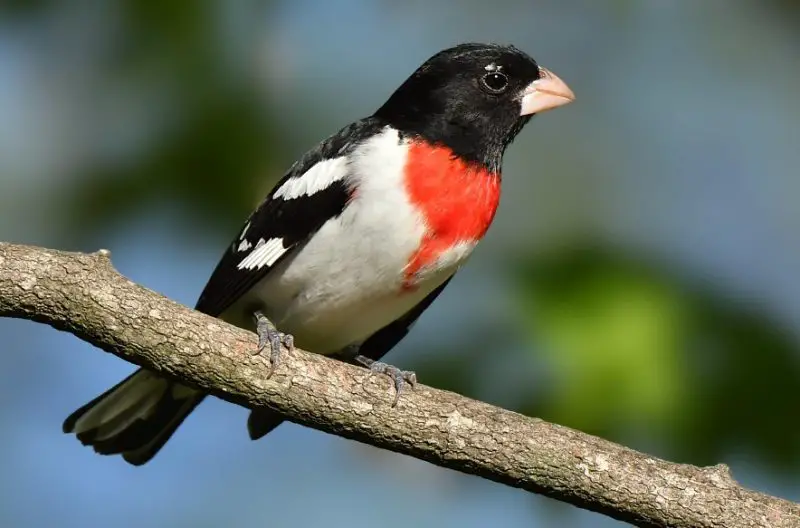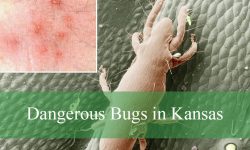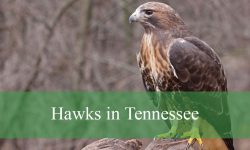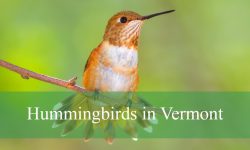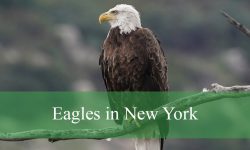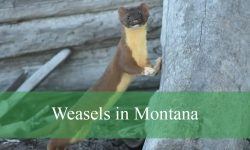The birds of Tennessee encompass a rich tapestry of over 400 species, thriving amidst the state’s diverse landscapes. From the rugged beauty of the Great Smoky Mountains in the east to the tranquil expanses of Reelfoot Lake in the west, Tennessee offers a mosaic of habitats that attract a wide array of avian residents.
Whether soaring over oak forests or flitting through backyard feeders, each bird contributes to the vibrant natural symphony that defines this southeastern gem for bird enthusiasts.
How many of Tennessee’s avian residents have you identified? Explore this guide to common backyard and wild birds to enhance your birdwatching experience!
Common Birds of Tennessee
House Finch
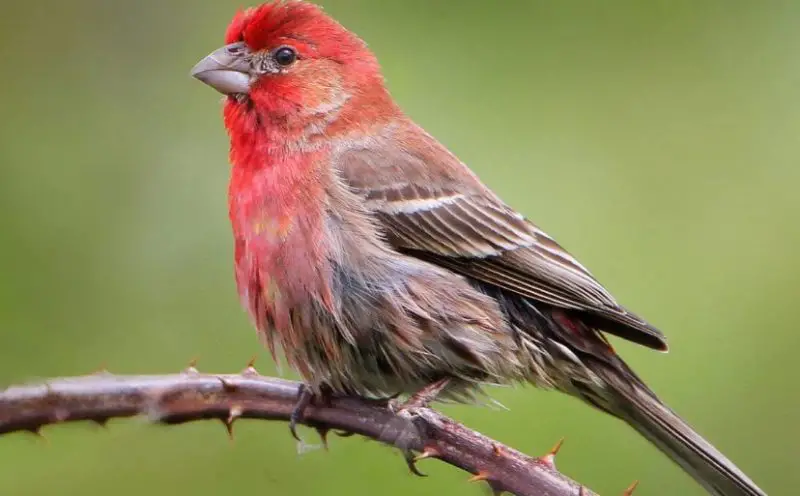
Adult male House Finches are rosy red around their heads and upper breasts, with brown streaks on their back, tail, and belly. Females are brown with similar streaks. Both sexes have conical beaks for eating seeds and notched tails.
Common in Tennessee, they are often found near buildings, backyards, and parks. Curious and social, House Finches are usually the first to find new bird feeders, enjoying sunflower, Nyjer, and safflower seeds. Their song is a series of jumbled, warbled notes.
American Crow

The American Crow is a large, entirely black bird with an iridescent sheen, a long black bill, and black legs and feet. Highly adaptable, they are common in Tennessee across various habitats, including woodlands, fields, and urban areas. They are attracted to peanuts, whole kernel corn, and suet.
Known for their intelligence, crows use tools and recognize human faces. Their calls include various caws, rattles, cackles, and clicks, with “caw-caw” being the most common.
Song Sparrow
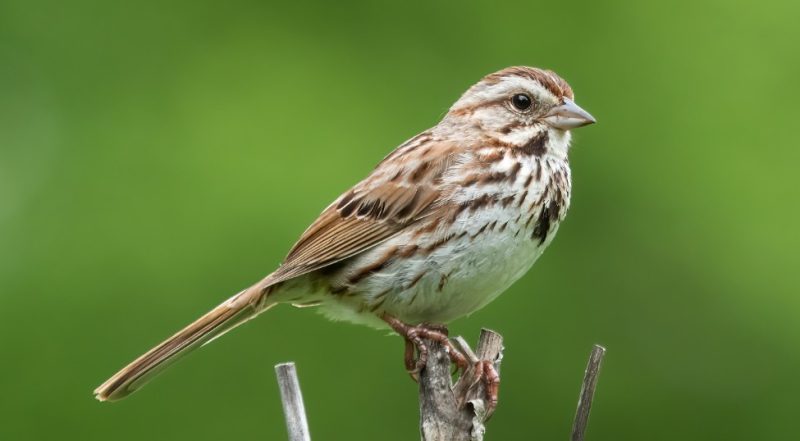
Song Sparrows have brown streaks on their chests that converge into a central breast spot. Their head features a brown crown with a grey stripe down the middle, a grey eyebrow, and cheek. Their back and body are rust-brown with grey streaks.
Common in Tennessee, they inhabit wet, shrubby, and open areas, nesting in weeds and grasses. Their beautiful songs, consisting of three short notes followed by a trill, vary by location and individual bird.
White-breasted Nuthatch
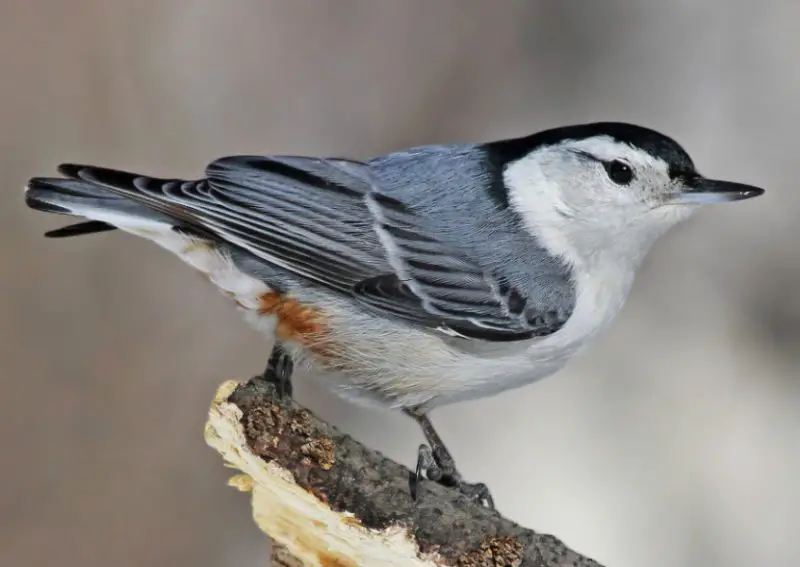
White-breasted Nuthatches are compact birds with no neck, a short tail, and a long, pointy bill. Males have a black cap, while females display a lighter gray crown. They feature distinctive white cheeks and chests with a blue-gray back.
Common in Tennessee’s deciduous forests, they also adapt well to parks, cemeteries, and wooded backyards. To attract them, use sunflower seeds, peanuts, suet, safflower seeds, and mealworms. Their loud “yank” call is easy to identify and often repeated several times.
Red-winged Blackbird
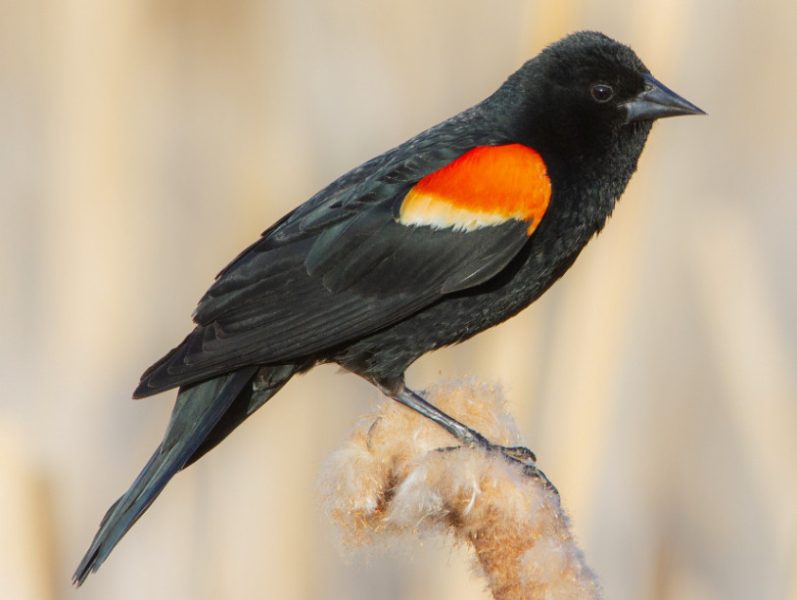
Male Red-winged Blackbirds are all black with a bright red and yellow patch on their shoulders, while females are brown and heavily streaked with some yellow around their bill. Both sexes have a conical bill and are often seen on cattails or perched high in trees.
Common in Tennessee’s marshes during breeding season, females nest in dense vegetation, and males aggressively defend their territory. In nonbreeding season, they frequent grasslands and fields in large flocks. Their distinctive song is a rich, musical “conk-la-ree!”
European Starling

European Starlings are common in Tennessee, resembling the size of an American Robin with shiny black plumage, a short tail, and a long, slender beak. Breeding adults have a green-purple tint, while winter birds lose glossiness and develop white spots.
Introduced in 1890, they’re invasive and outcompete native species. Adaptable to human environments, they eat almost anything and can form disruptive flocks. Their vocalizations range from musical to squeaky, including mimicry of other birds.
Brown-headed Cowbird
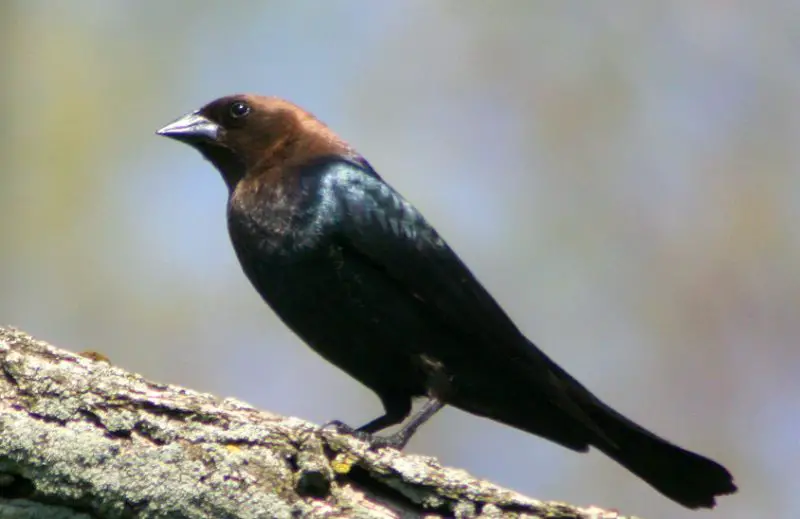
The Brown-headed Cowbird is a stocky blackbird with a thick, conical bill. Males have black bodies with a brown head that can be difficult to distinguish in poor light, while females are plain brown with slight belly streaking and a black eye.
Found in Tennessee’s grasslands, thickets, and woodland edges, they’ve adapted to human development in areas like residential neighborhoods and orchards. Known as brood parasites, they lay eggs in other birds’ nests, relying on them to raise their young. Their song is a distinctive “glug glug glee.”
House Wren
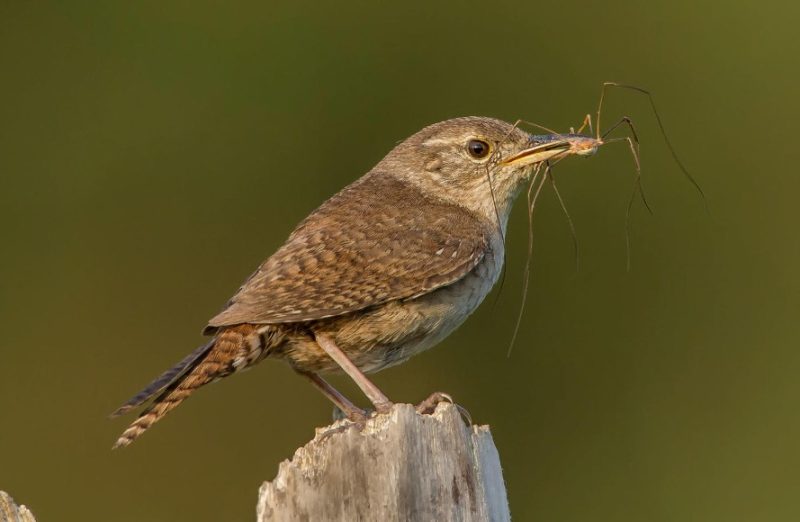
The House Wren is a common sight in Tennessee, often seen darting through backyards hunting insects. They rarely visit bird feeders but can be attracted by creating brush piles for cover and insect gathering.
These small, brown birds have short tails, thin bills, and dark barring on their wings and tail. Both sexes look alike. Known for nesting in unusual spots like clothespin bags and boots, they sing a rapid, flutelike melody with squeaky chatters and rattles.
Mourning Dove
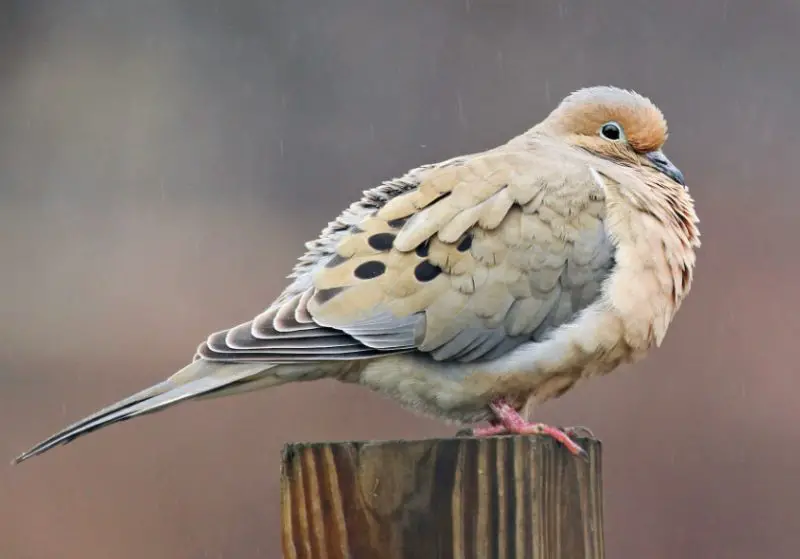
The Mourning Dove, a mostly grayish bird with large black wing spots and a long, thin tail, is common in Tennessee. It has pinkish legs, a black bill, and blue eyerings. Both males and females look alike. They can be found perched in trees, on telephone wires, or feeding on the ground.
To attract them, provide millet, shelled sunflower seeds, Nyjer seeds, cracked corn, and safflower on flat feeders or the ground. Their distinctive “coo-ah, coo, coo, coo” call is often mistaken for an owl.
Rock Pigeon
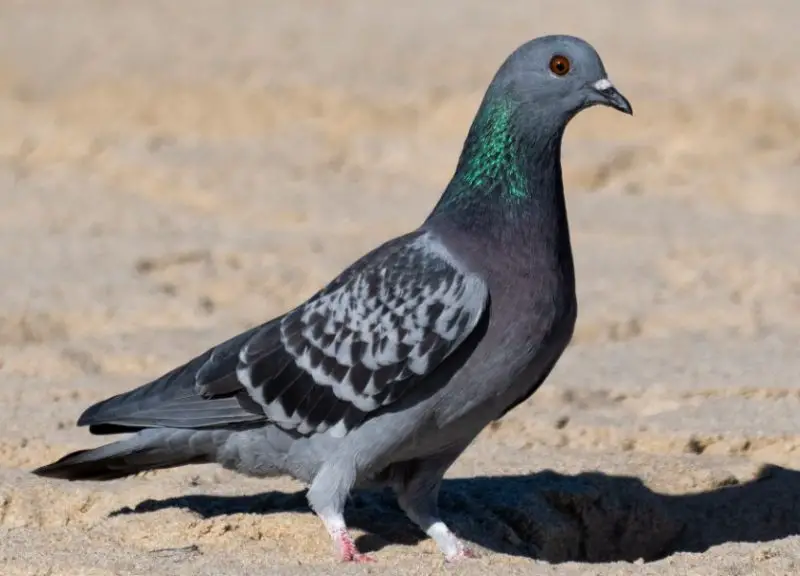
The Rock Pigeon is a plump bird with a small head, short legs, and a thin bill. Typically, it has a gray back, a blue-grey head, and two black wing bars, though its plumage can vary widely. Common in Tennessee’s urban areas, they are often seen in large flocks in city parks, seeking food.
Known for their soft, throaty coos, Rock Pigeons can become a nuisance in high numbers, but they have been associated with humans for over 5,000 years.
Northern Cardinal
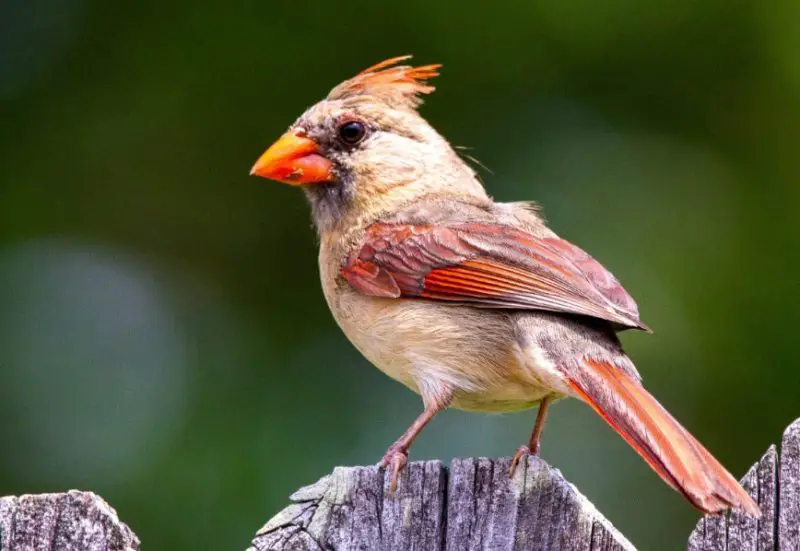
The Northern Cardinal is a popular bird in Tennessee. Males are a stunning red with a black mask and throat, while females are pale orangish-brown with red highlights. Both sexes have a crest and a short, thick bill, perfect for cracking seeds.
To attract them, offer sunflower seeds, safflower seeds, corn, and peanuts in easy-to-use feeders like trays and hoppers, and provide fresh water in a birdbath. Their clear whistled melodies, sounding like “birdie-birdie-birdie” or “cheer-cheer-cheer,” are easily recognizable.
Blue Jay
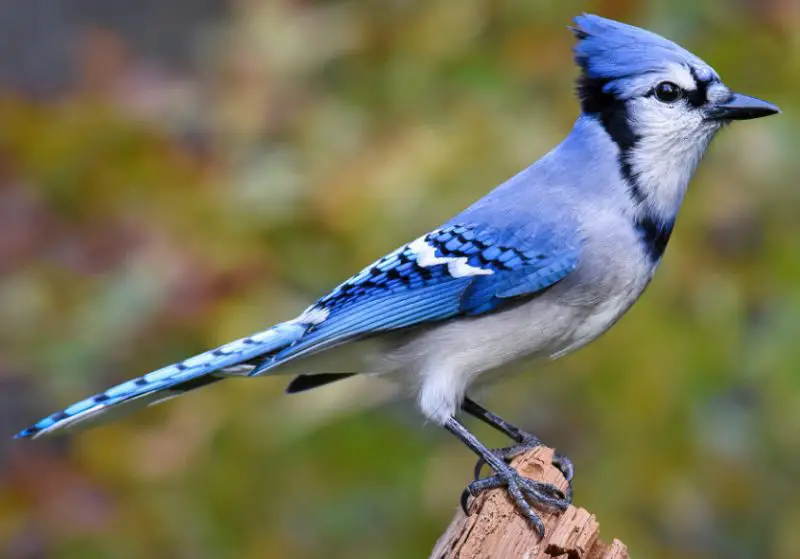
The Blue Jay, covered in beautiful blue feathers with black bars and white underparts, is easily recognizable by its black necklace and blue crest. Males and females look the same. Despite mixed opinions, I love their bold personalities and high intelligence. They noisily visit feeders, storing food in their throat sacks to cache later.
Blue Jays enjoy whole peanuts, sunflower seeds, and corn. Known for their alarm call, which sounds like “jeer,” they are also excellent mimics, often imitating hawks to deceive other birds.
Tufted Titmouse

The Tufted Titmouse is a grayish bird with white underparts, a peach wash on the sides, and a crest on its head. It has a black forehead and large, dark eyes, with males and females looking alike. Common in Tennessee’s deciduous forests, backyards, and parks, they acrobatically flit from tree to tree.
Regular visitors to bird feeders, especially in winter, prefer sunflower seeds but also eat peanuts, safflower seeds, and suet. Their fast, repeated whistle sounds like “peter-peter-peter,” and they also have a scratchy “tsee-day-day-day” call.
Common Grackle
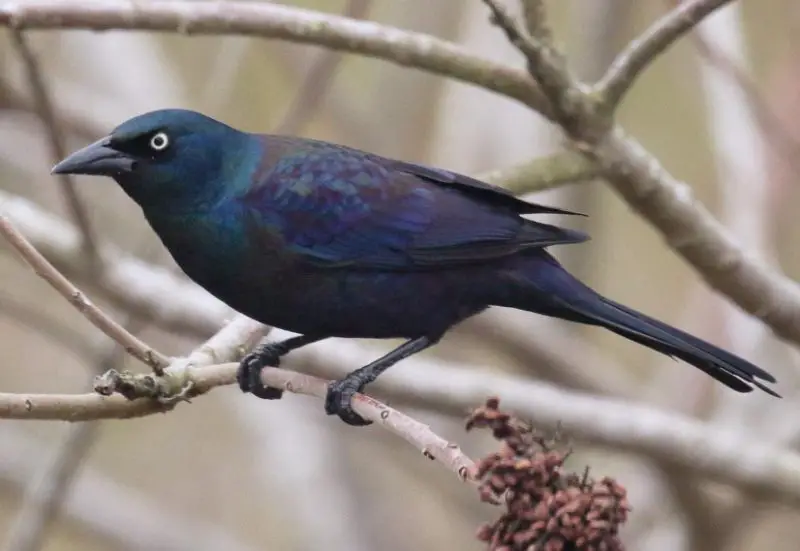
Common Grackles are lanky, large blackbirds with a long tail and a slightly curved bill. Males are black with an iridescent blue head and bronze body, while females are less glossy. Resourceful and common in Tennessee, they favor grains like corn and rice but eat a wide range of foods.
Known for their loud, rusty gate-like song, they often form large, aggressive flocks that can dominate bird feeders.
Pileated Woodpecker
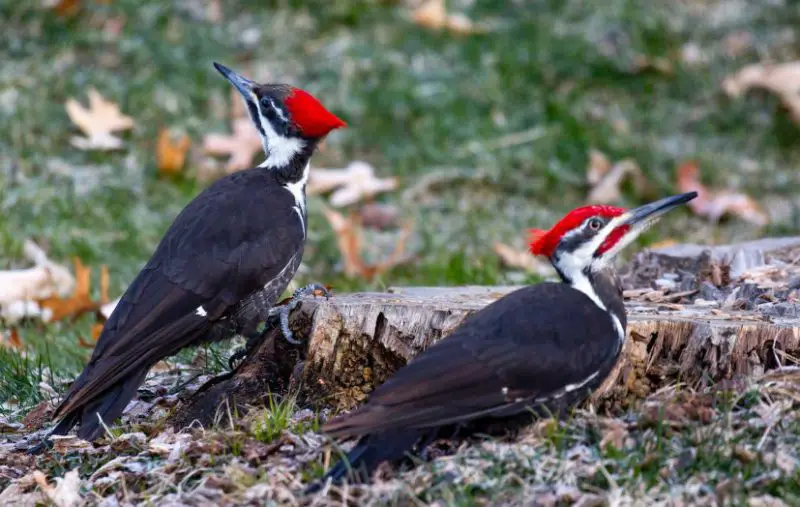
Pileated Woodpeckers are strikingly large birds, about the size of a crow, reaching up to 19 inches long with a 30-inch wingspan. They are mostly black, with white stripes on their face and neck and a distinctive red crest. Males have a red cheek stripe, while females’ stripes are black.
Common in Tennessee’s mature forests, they feed on ants, beetles, termites, fruits, and nuts. Their loud “cuk-cuk-cuk” call is distinctive.
Red-bellied Woodpecker
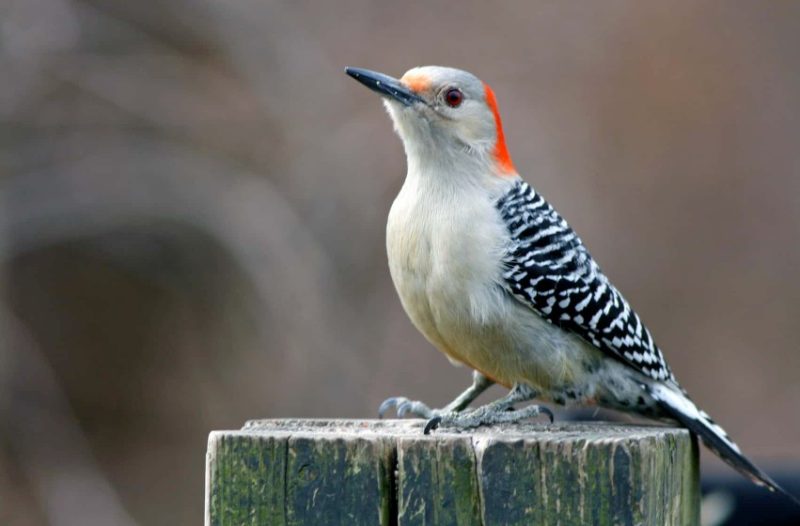
Red-bellied Woodpeckers are a favorite at feeders, admired for their black and white barred backs. Despite their name, the red on their bellies is minimal. The red on their heads differentiates sexes: males have red from beak to neck, females only on the neck.
Common in Tennessee, they enjoy peanuts, sunflower seeds, and suet. Their call is a distinctive rolling “churr-churr-churr,” often heard in forests and wooded areas.
American Robin
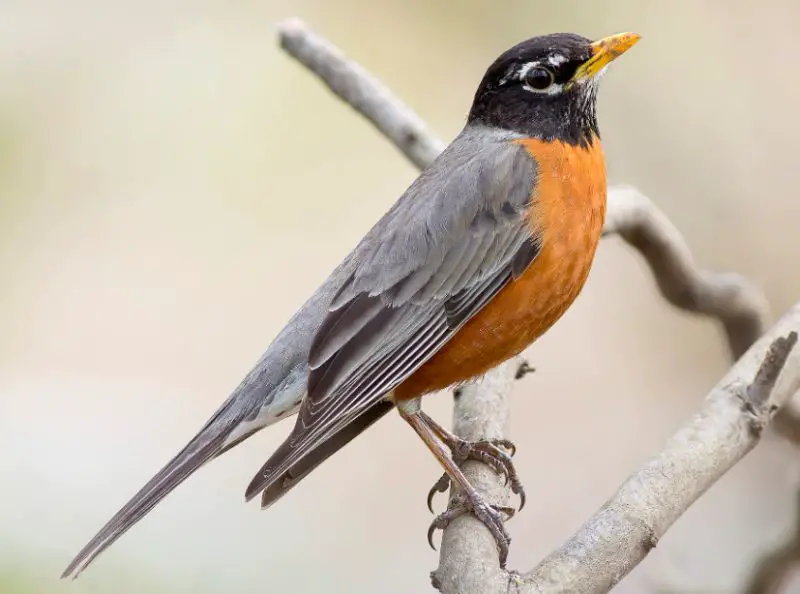
The American Robin is a beautiful thrush with a rusty red breast and a dark head and back, featuring a white throat and splotches around the eyes. Males and females look similar, though females appear paler.
Common in Tennessee, they thrive in various habitats, from forests to tundra, and are often seen in backyards. Their diet includes invertebrates and fruit, and they typically nest near people, laying distinctive sky-blue eggs. Their song is a string of clear whistles.
Downy Woodpecker
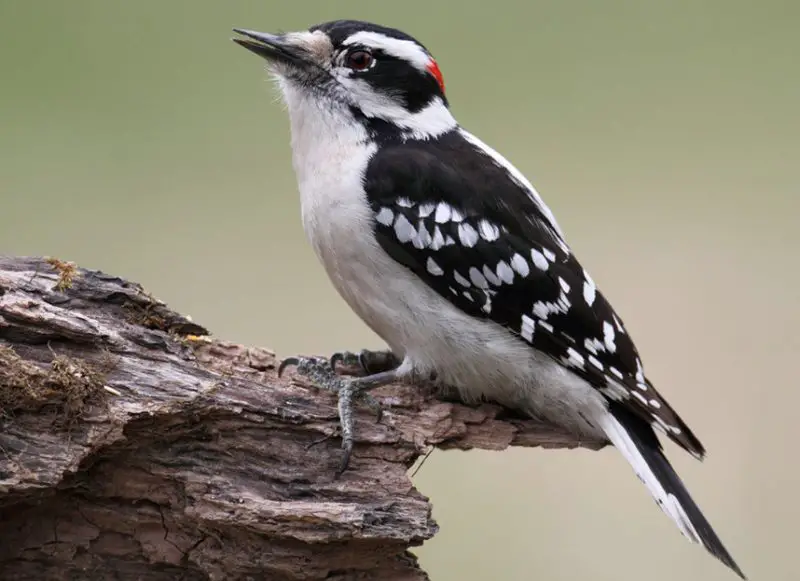
The Downy Woodpecker is a small woodpecker with a short bill. They have white bellies and mostly black backs with white streaks and spots. Males have a red spot on the back of their heads, which females lack.
Common in Tennessee, they are easily seen in most backyards. They are attracted to suet, sunflower seeds, and peanuts, and their calls sound like a high-pitched whinny that descends in pitch.
Hairy Woodpecker
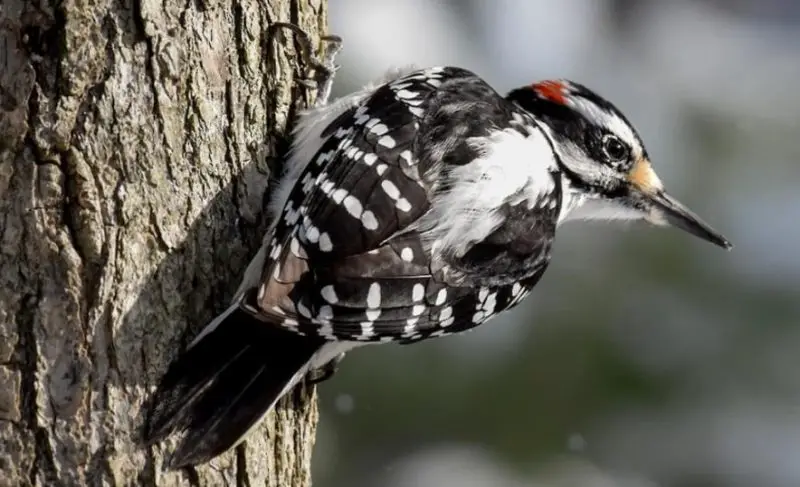
The Hairy Woodpecker has a striped head and a straight-backed posture on trees. They are black and white with a long, chisel-like bill. Males have a red patch on the back of their heads, which females lack.
Common in Tennessee, they inhabit mature forests, suburban backyards, urban parks, swamps, orchards, and cemeteries. Their call is a short, sharp “peek,” and they can be distinguished from Downy Woodpeckers by their larger size and bill length.
American Goldfinch

In summer, male American Goldfinches are vivid yellow with a black cap and wings, while females are a duller yellow and lack the black cap. In winter, both sexes turn pale brown/olive with black wings and a white wing bar.
Common in Tennessee, they are easily attracted to backyards with Nyjer seed and sunflower kernels. These small birds feed exclusively on seeds and breed later in the year. Their song is a series of musical trills and warbles.
House Sparrow
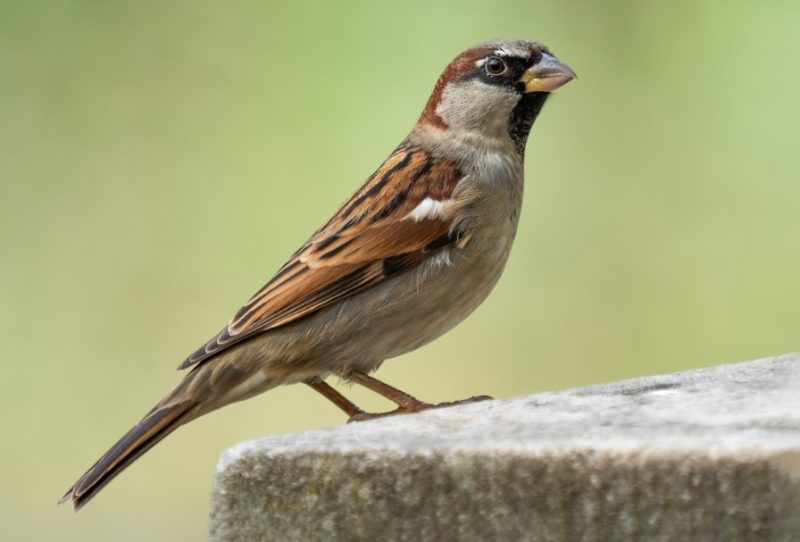
Male House Sparrows have gray crowns, black bibs, white cheeks, and chestnuts on the sides of their faces and necks. Females are dull brown, with black streaks on their backs and a tan line behind their eyes.
Originally from the Middle East, these invasive birds are now abundant in Tennessee and globally. They thrive in urban areas and are often seen eating grains, bread, and popcorn. Their song features simple “cheep” notes.
Eastern Bluebird

Eastern Bluebirds are renowned for their vibrant blue plumage with rusty chests and throats in males, while females have more subdued colors. Commonly found in Tennessee’s open spaces like meadows, parks, and backyards, they captivate with their beauty and cheerful demeanor.
Attracting them to feeders is feasible with foods like mealworms and berries. Their melodic warbling song, a liquid-sounding warble of 1–3 notes repeated, is distinctive and delightful to hear in outdoor settings.
Ruby-throated Hummingbird

The Ruby-throated Hummingbird is easily identified by the bright red throat in males, contrasting with a black chin and green head and back. Females lack the red throat and black chin, but have a white throat and green back.
Common in Tennessee during the summer, they migrate to Mexico as temperatures cool, often crossing the Gulf of Mexico non-stop. Their distinctive calls, a chattering “chee-dit,” are heard during flight and interactions, adding to their charm in gardens and natural habitats.
Baltimore Oriole
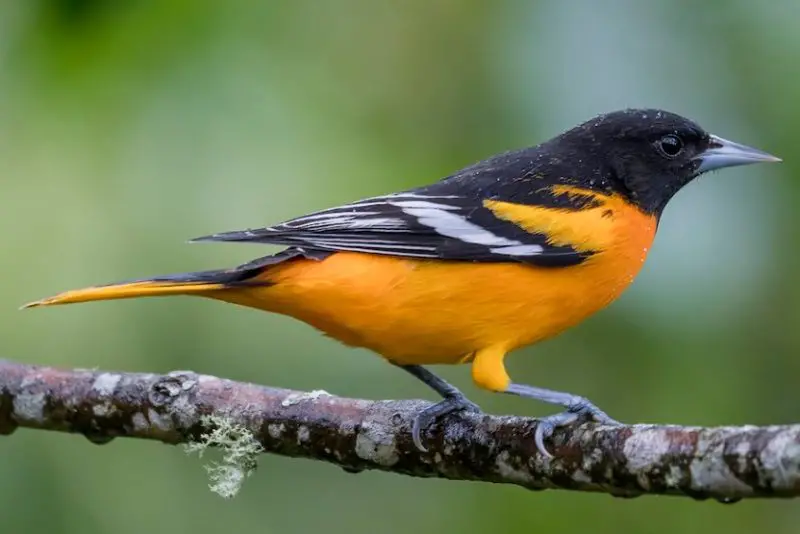
The Baltimore Oriole heralds spring with its distinctive whistling song, a hallmark of its return. Males dazzle with vibrant orange and black plumage adorned with white wing bars, making them a standout in Tennessee. Females, though more subtly colored, share their habitat in open woodlands and along riverbanks, favoring fruit, jelly, and nectar.
Their melodious flute-like calls echo from treetops as they defend territories or communicate with mates, adding a delightful charm to their presence in gardens and natural settings.
Carolina Wren
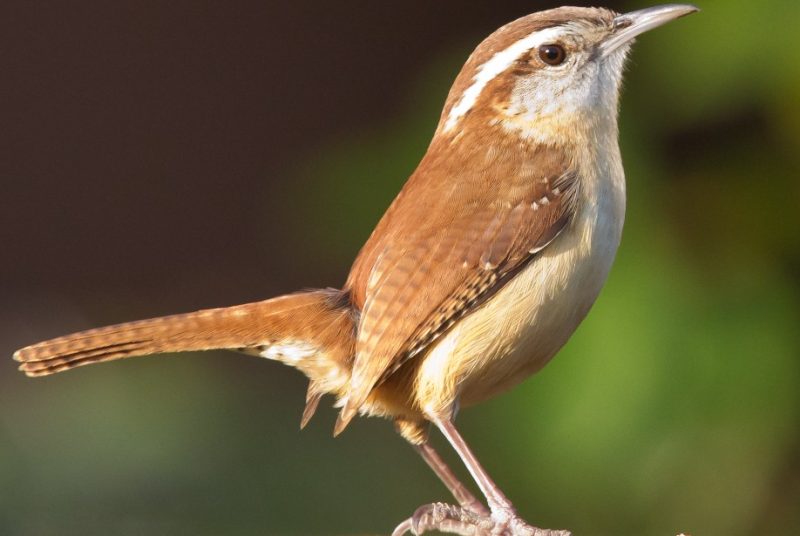
Carolina Wrens in Tennessee are reddish-brown with white throats and eye lines, and darkly barred wings and tails. Despite their commonality, they’re elusive, preferring shrubby habitats for concealment. Attract them to feeders in winter with suet, peanuts, sunflower seeds, and mealworms.
Known for their melodious “tea-kettle tea-kettle tea-kettle” song sung by males, they announce their presence even before they’re seen. Their varied vocalizations add to their charm, making them a delight for birdwatchers attuned to their distinct calls.
Chipping Sparrow
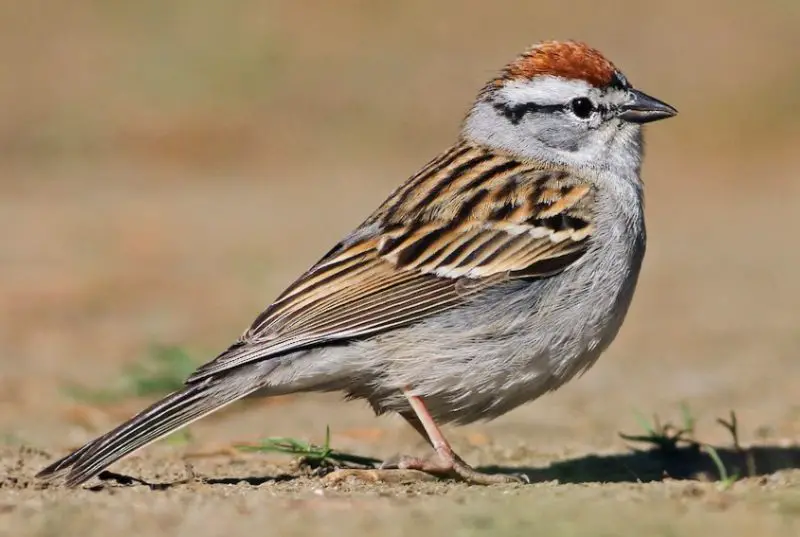
Chipping Sparrows in Tennessee are distinguished by their rust-colored crowns, varying from bright to brownish hues. Slim with long tails and medium bills, they’re frequent visitors at backyard feeders, particularly fond of black oil sunflower seeds.
Found in woods near meadows and suburban areas, they announce their presence with loud, trilling songs—repetitive, mechanical-sounding notes that fill the air in spring and summer. Their adaptable nature makes them a delight for birdwatchers and suburban dwellers alike.
Dark-eyed Junco
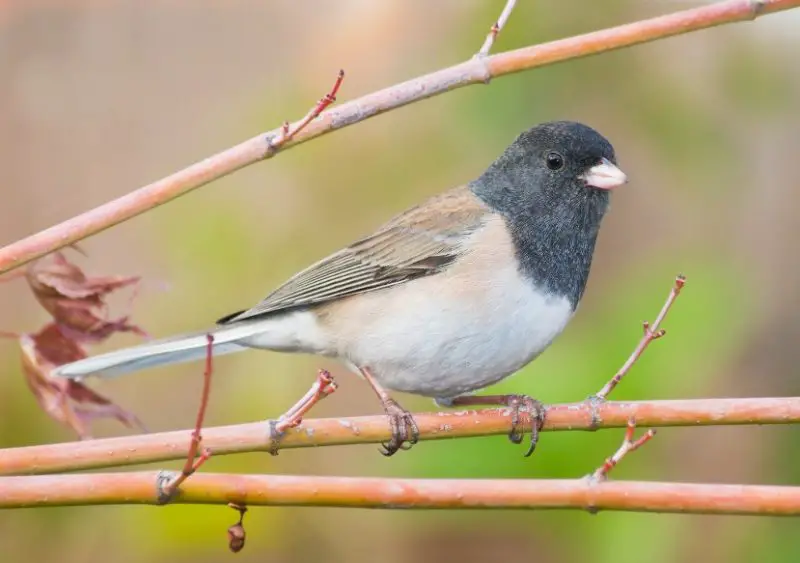
Dark-eyed Juncos in Tennessee are easily recognized by their smooth slate gray plumage and white bellies, often showing a white flash from their tail feathers in flight. Commonly known as “Snowbirds,” they appear in winter across fields, parks, and backyards, preferring ground feeders for fallen seeds.
Found in pine forests during breeding season, their trilling songs carry across distances, enhancing their presence in winter landscapes with melodies of warbles, trills, and whistles, marking their seasonal return with distinctive calls.
Pine Siskin
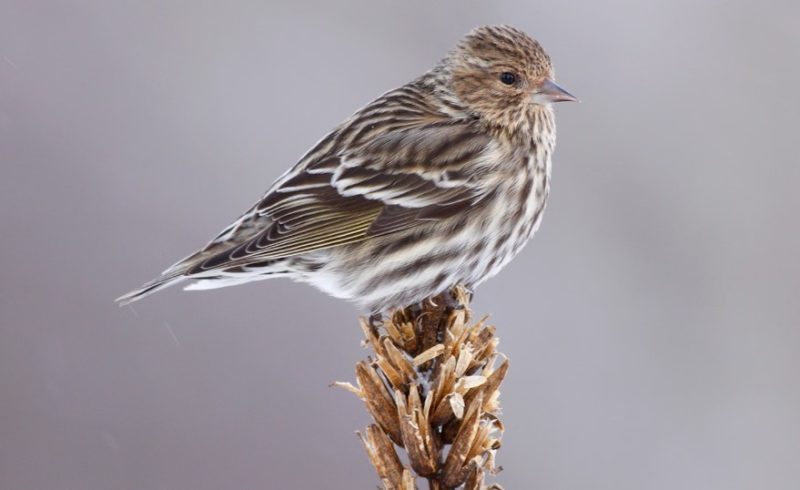
The Pine Siskin, small and streaked with yellow-edged wings and tails, is uniform in appearance between sexes—a rarity among finches in Tennessee. Found in mixed forests and adaptable to weedy fields and gardens, they flock and chirp incessantly while foraging. Winter sees them at bird feeders, favoring small seeds like sunflower or Nyjer.
Their social nature is evident in constant chattering even in flight, marked by a twittering warble that includes a rising “ZZZzzzzzreeee,” distinctive for its wheezy quality among Tennessee’s finches.
The Rose-breasted Grosbeak, robust with a large triangular bill, resembles the American Robin in size. Males flaunt black backs and wings contrasted by a vibrant red spot on their white breasts, earning them their name. Females, heavily streaked with a white eyebrow, are less conspicuous.
They frequent bird feeders for sunflower seeds on platforms, using their bills adeptly. Males sing melodious tunes to mark territory and attract mates; their rich, rising-and-falling songs are a highlight of spring in Tennessee’s wooded habitats.
White-crowned Sparrow
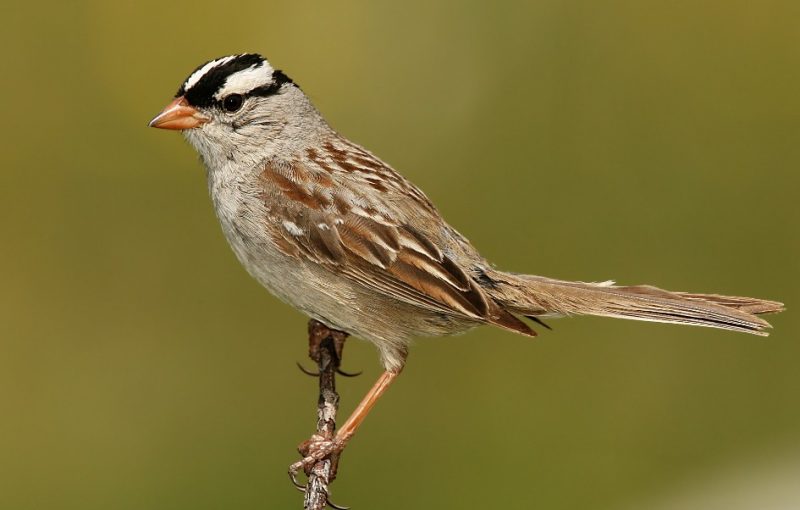
White-crowned Sparrows are identifiable by their gray or brown plumage, long tails, and distinctive black-and-white or brown-and-tan head stripes with a peaked crown. They are found in shrubby habitats during breeding and in weedy fields and backyards in the winter.
They favor sunflower seeds placed on the ground. Known for their migratory feats, they can travel over 300 miles in a single night. Males primarily sing a brief, melodious song, enriching the auditory landscape of their habitats in Tennessee.
White-throated Sparrow
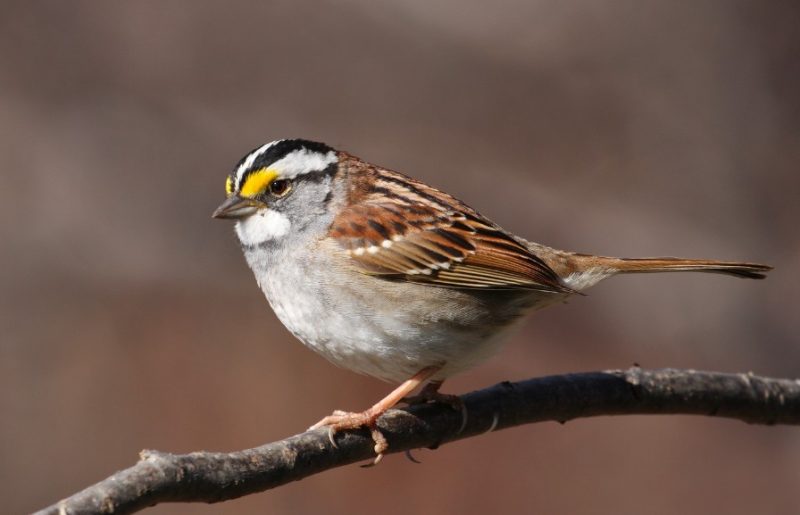
White-throated Sparrows in Tennessee are recognizable by their chunky bodies, black-and-white striped heads with a yellow spot between the eyes, and white throat patches. They forage along forest edges, often scratching at leaf litter or moving leaves with their bills.
These sparrows readily visit feeders for sunflower seeds or millet, preferring ground feeding near thickets. Their high-pitched whistle, resembling “Oh-sweet-Canada-Canada,” is distinctive and easily learned, adding to their charm in gardens and wooded areas.
Gray Catbird
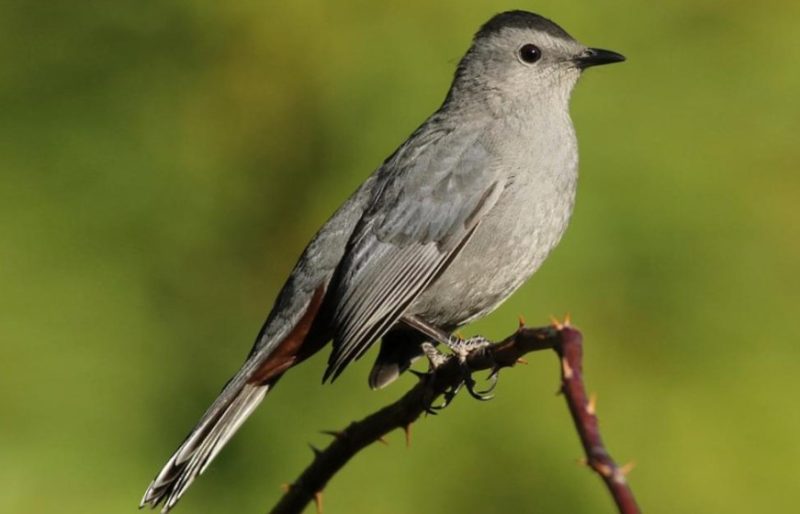
The Gray Catbird, distinguished by its overall gray plumage and black cap, is renowned for its mimicry of other birds’ songs. Its signature call—a raspy, cat-like “meow”—is unmistakable and lends it its name. In Tennessee, they’re attracted to bird feeders with grape jelly, surprising many with their preference for this sweet treat typically used to attract orioles.
These vocal and adaptable birds frequent dense thickets and suburban areas, showcasing their charming and versatile behaviors to delighted observers.
Northern Mockingbird
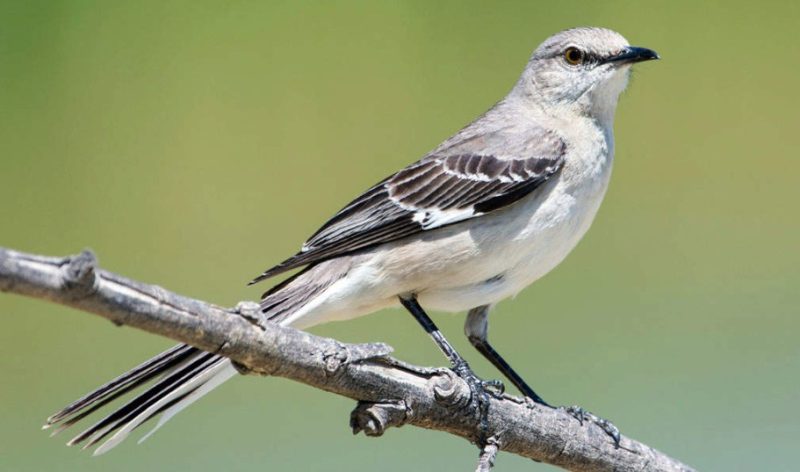
The Northern Mockingbird, a medium-sized gray songbird with a long, slender tail and distinctive white wing patches, is a charismatic presence in Tennessee. Renowned for their ceaseless singing, often even at night, they’re known to assertively defend territories by harassing other birds.
While common in backyards, they rarely feed from bird feeders, preferring insects and berries. Their bold behaviors and melodious songs make them a beloved but sometimes disruptive feature of suburban landscapes, adding charm and character to their surroundings.
Red-breasted Nuthatch
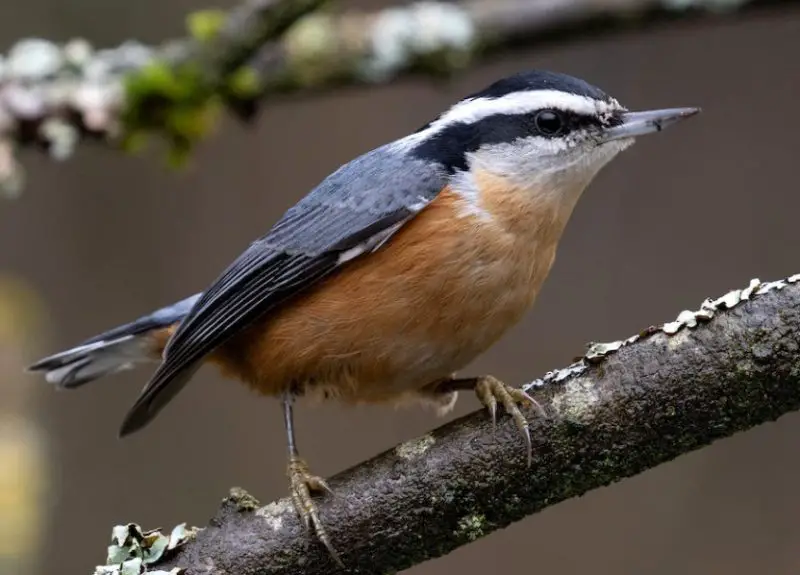
Red-breasted Nuthatches are vibrant and compact birds known for their active behavior and short tails. They breed in northern North America and winter across a wide range, including Tennessee’s coniferous forests. Their distinctive “yank-yank-yank” calls, reminiscent of a toy tin horn, are a familiar sound in woodland habitats, especially from males seeking mates.
Their preference for conifers contrasts sharply with White-breasted Nuthatches, highlighting their adaptability and distinct ecological niche in diverse forest ecosystems.

